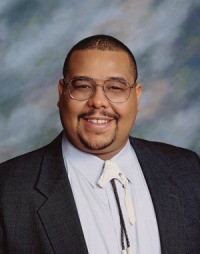
In addition to the jobs that tribal gaming creates for thousands of Americans, the deeper economic impacts achieved by Indian gaming are well documented, but very often overlooked.
The impact of the goods and services purchased by those who live within tribal communities as well as their tribal governments, business patrons and tribal employees is further magnified by the history of tribal philanthropy and tribal non-gaming investments.
Despite the fact that these ongoing positive impacts are still largely ignored by most major American media outlets, no reputable professional even disputes the economic benefits created by Indian gaming these days—that is a good outcome created by the sweat of many of Indian Country’s modern-day warriors.
These modern-day warriors have included (for a very long time) leaders like Rick Hill, Ivan Makil, Mark Macarro, Ron Allen and Ernie Stevens fighting for all tribes as well as their own. One of the even less publicly recognized things that each of them still fight for to this very day is the provision of essential tribal government services to Native American communities.
Each of them, and many more Native peoples, recognize that most of these essential services will either be provided through Tribal self-determination, or they will simply not be provided to Native communities at all. Among the most essential services that these leaders fought and fight for are those that focus upon preserving and sharing our tribal histories and tribal cultures.
Preserving tribal culture is important to all Native American people. It is very important to those of us who actively fight to save the languages, songs, dances, ceremonies, oral histories and documented histories of our people. Ironically enough, cultural preservation is even more important to those within our tribal families who do not actively join the fight.
Language is probably the most critical piece of any culture. So much of our identity as peoples can only be accurately reflected within the beautiful ancient languages that tribes continue to speak today. The boost provided by Indian gaming revenue for language preservation and reclamation efforts in Native American communities across America is a reflection of tribal self-determination in action. The end result is the provision of essential government services.
Tribal government gaming is helping many attempts to rebound from some of the ugliest chapters of American history in providing these language based essential government services. The forced assimilation policies of our country’s past created inter-generational negative impacts upon tribal communities that can still be clearly observed at work among our people today.
The forced boarding school experiences that many of our elders lived through gives us an understanding of the inhumanity behind historic attempts to eradicate Indian languages. My ancestors were executed for speaking their language in public, which was actually against the law in Connecticut during the 17th century.
Another set of common, and critically important, essential government services that are supported by Indian gaming revenues relate to the accurate reflection and full preservation of tribal histories. This source of revenue enables many tribes to preserve and reflect tribal history from their own perspective, producing yet another wave of tribal self-determination and tribal community progress impacts.
The incredible historical centers and museums that have been developed by tribes through the devotion of Indian gaming revenues are educational, cultural and historical treasures that should be viewed as a doing a service to all Americans and foreign visitors alike. Despite recent improvements in this area, the history class curriculum content utilized within most American school systems still contains little, if any, local or regional tribal community perspective.
This unfortunate fact makes tribal historical centers and museums the only place to get a sense of the full story that is so often buried within many commonly accepted portrayals of tribe-related American history.
In terms of providing a deep mutual community benefit, the approach of almost all of the tribes who have developed such institutions includes a strong focus upon sharing Native American culture and history with people of other cultures.
The sharing of inter-tribal culture is greatly supported by Indian gaming revenues, and also deeply emphasized by most tribes—the point of most pow-wows is to preserve the song and dance traditions that tribes share while enabling the general public to be entertained and to actually encourage them interact with Indian people on a person-to-person level.
These important cultural interactions help to temper, and sometimes even to reverse, the historically dehumanizing public perspectives about Native Americans that still plague us today. Increasing numbers of tribes are seizing the opportunity to be aligned, and to also be more mutually supportive, when it comes to serving critical tribal historical and cultural needs such as these.
It is heartwarming to see how these important cultural ends continue to be served as tribes gather for national inter-tribal meetings like the upcoming NIGA trade show and convention in San Diego. As we spread the word about Indian gaming and all of the American lives that have been changed for the better by Indian gaming, we can take comfort in knowing that several of the most important perpetual Native American focal points—culture, history and a tradition of sharing—are also being very well served by the collective focus of Indian Country.






